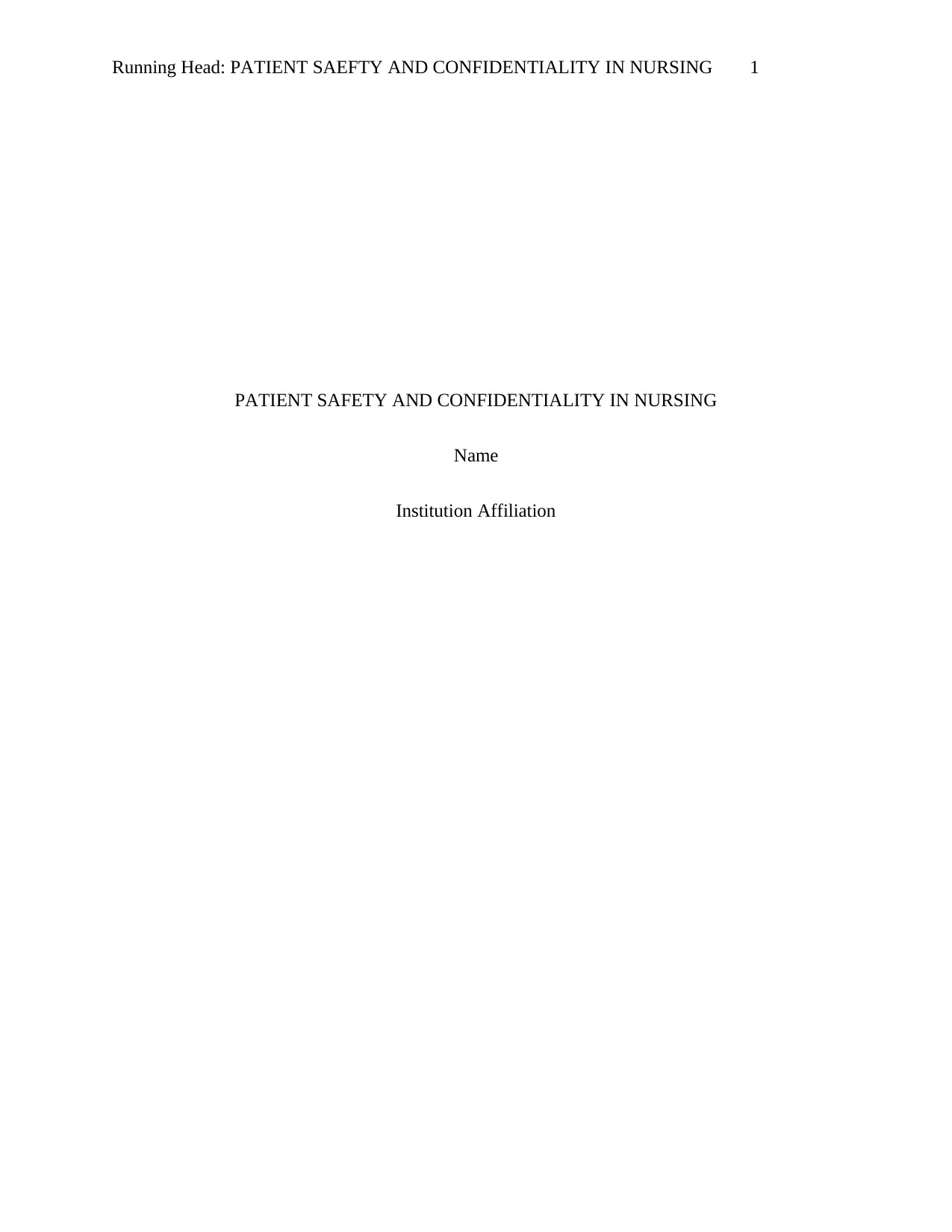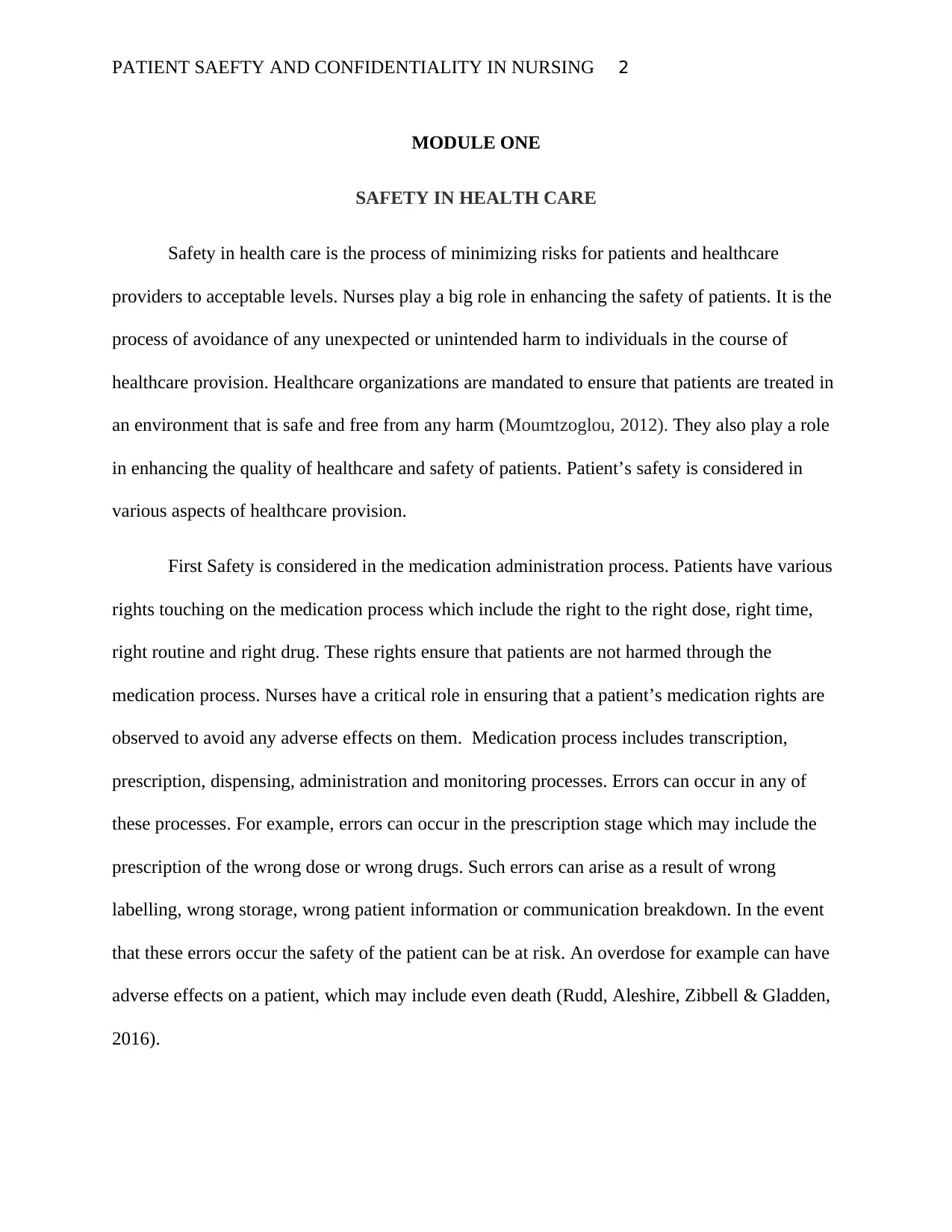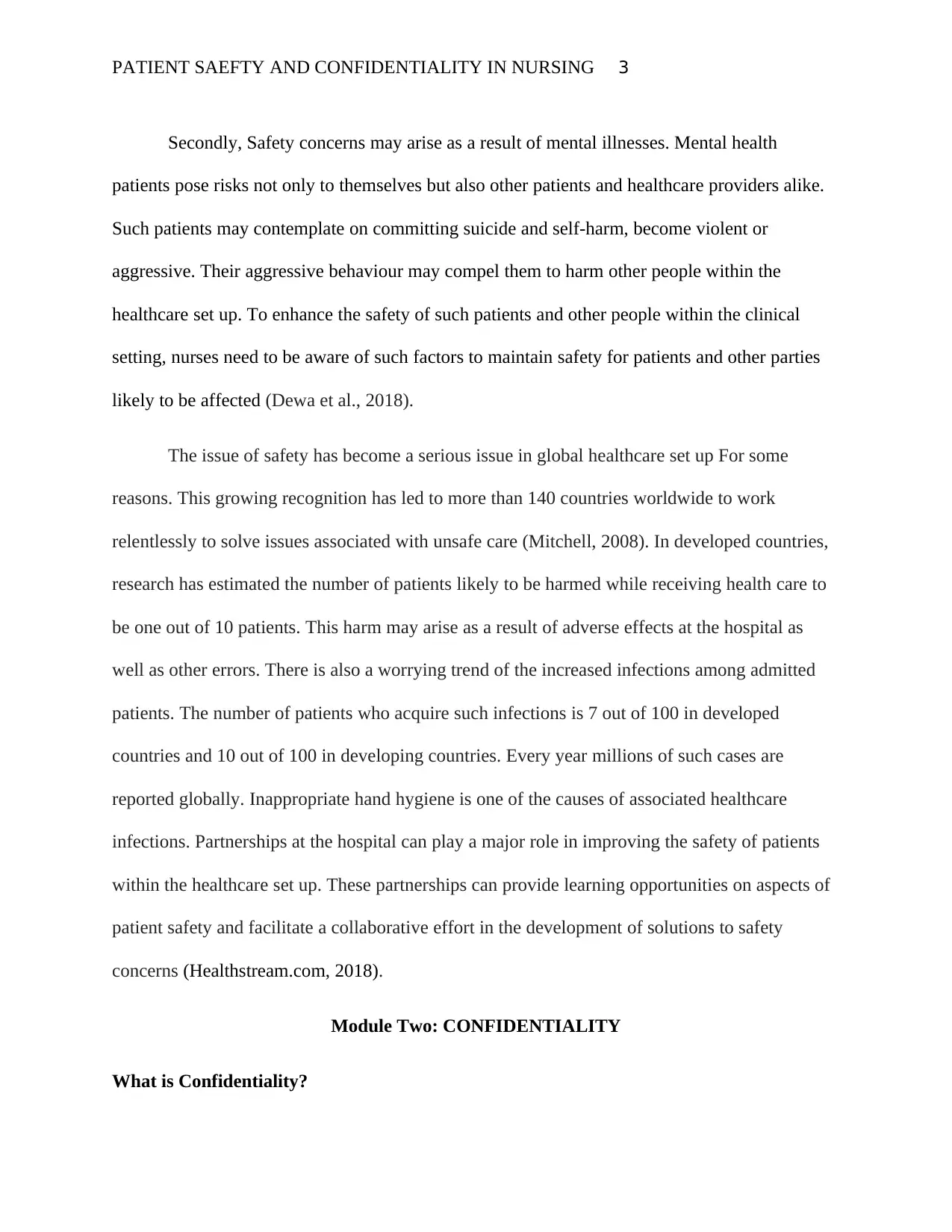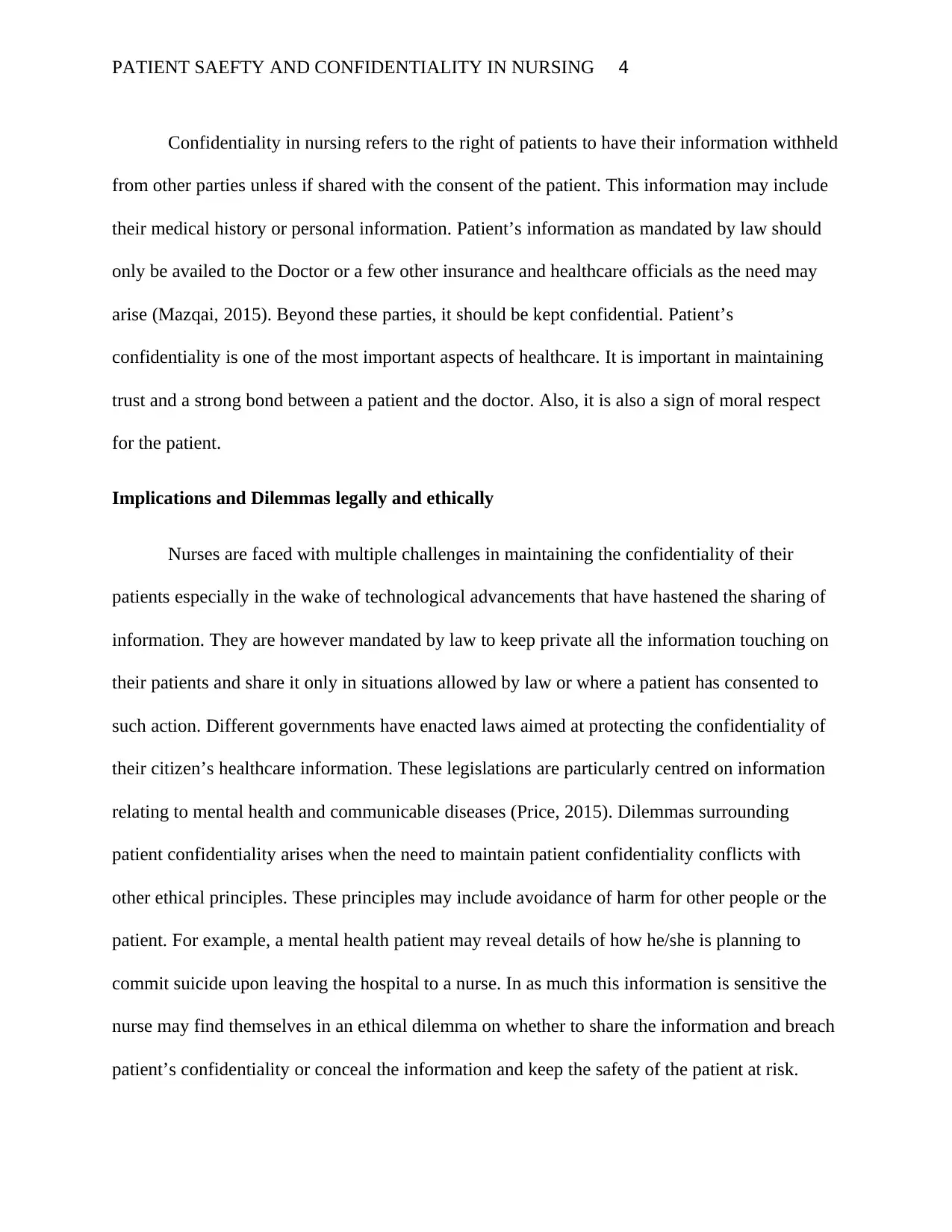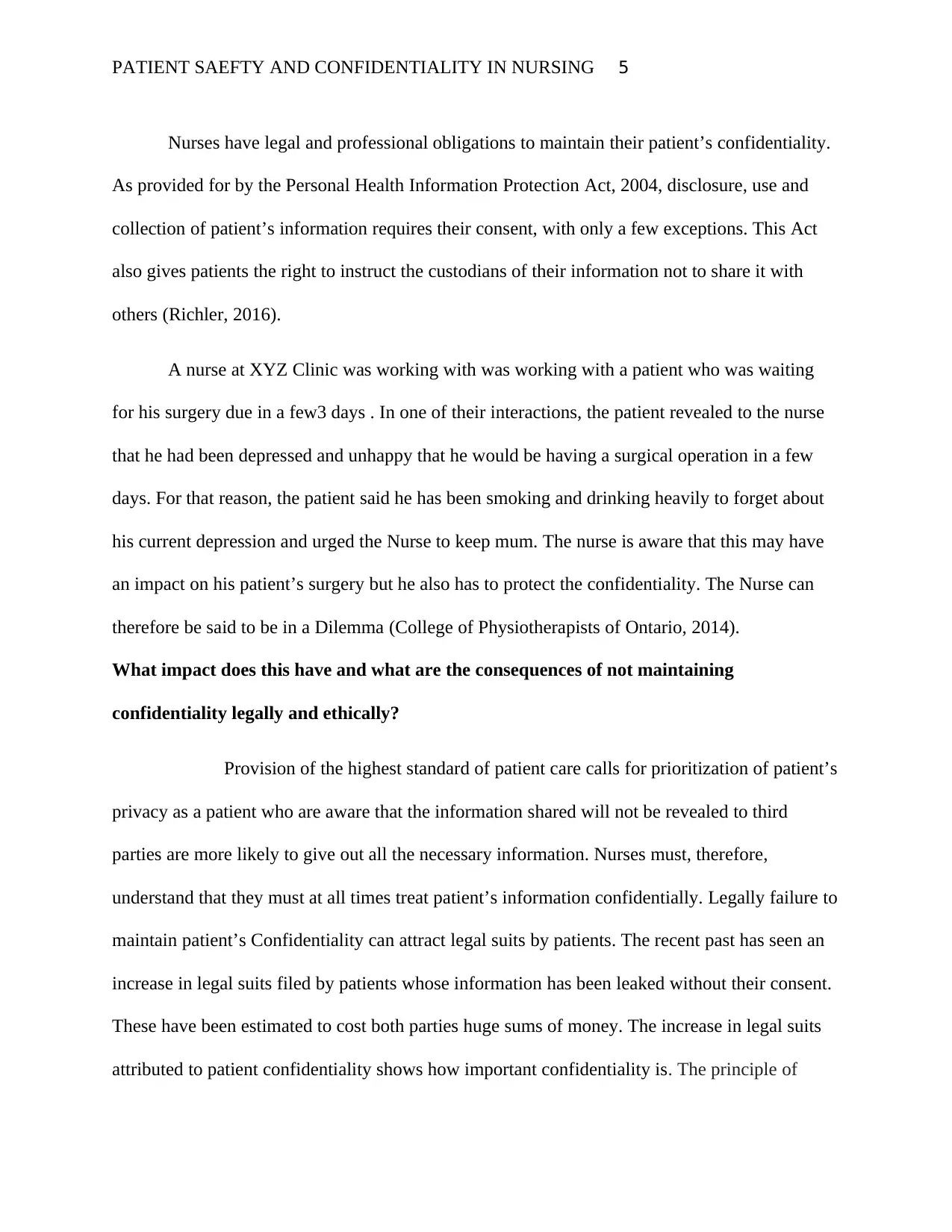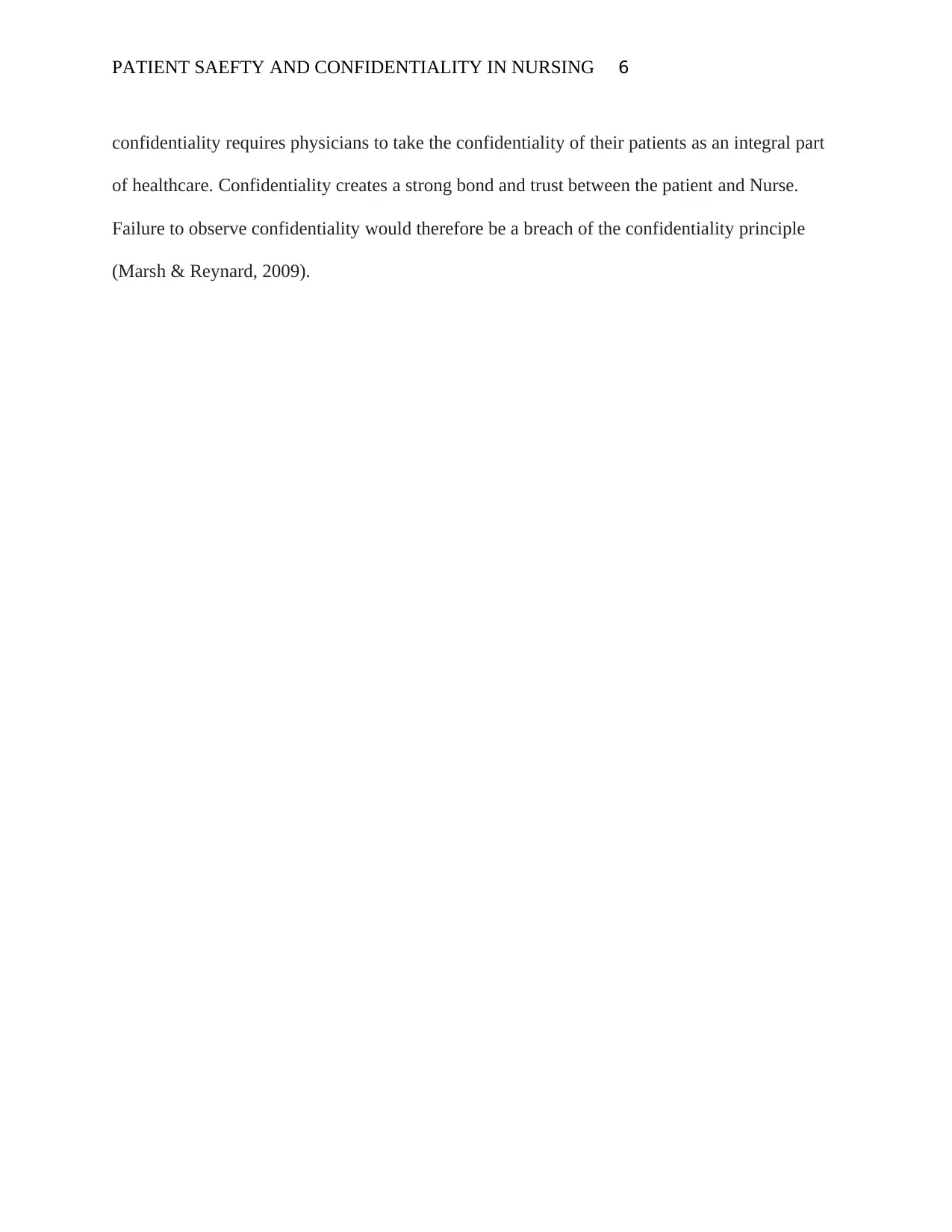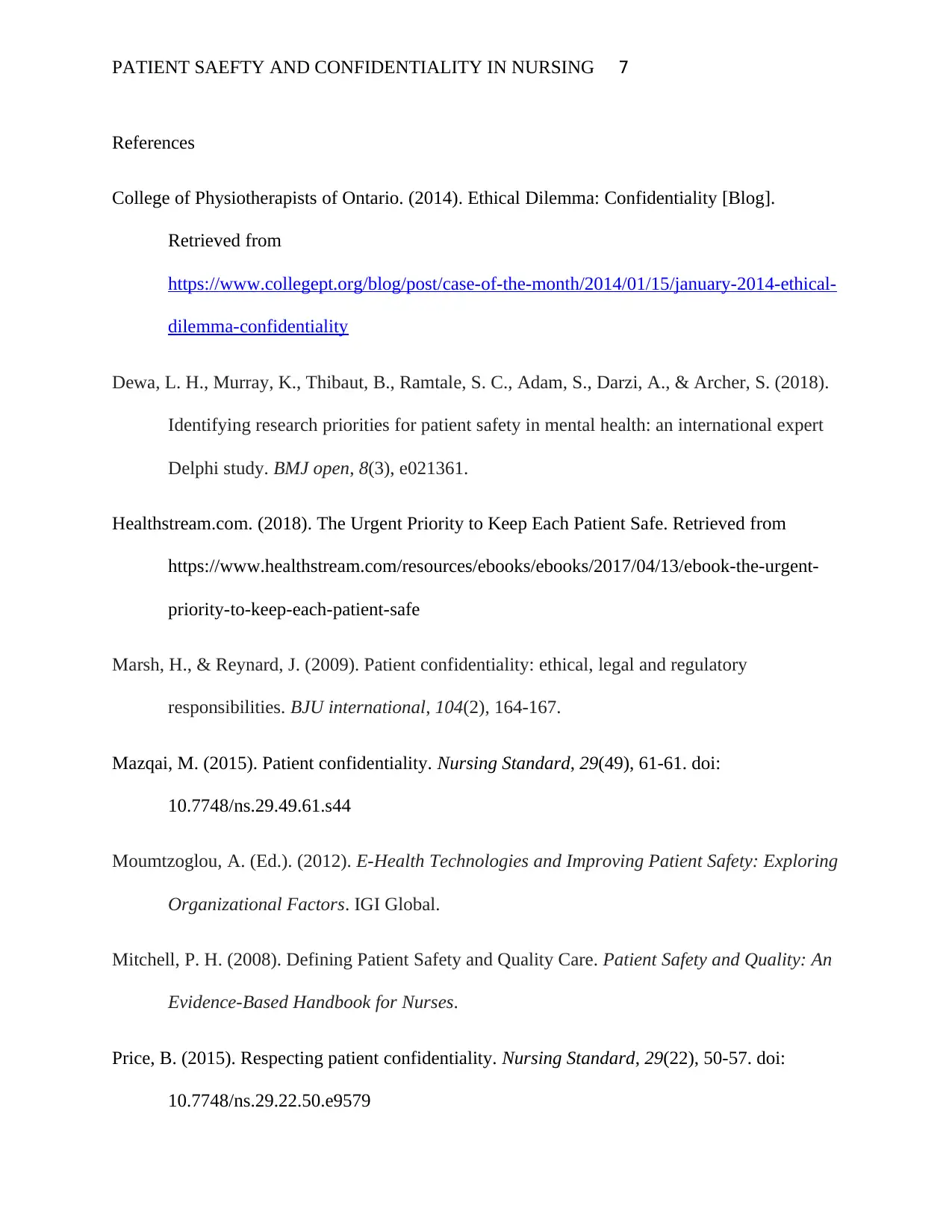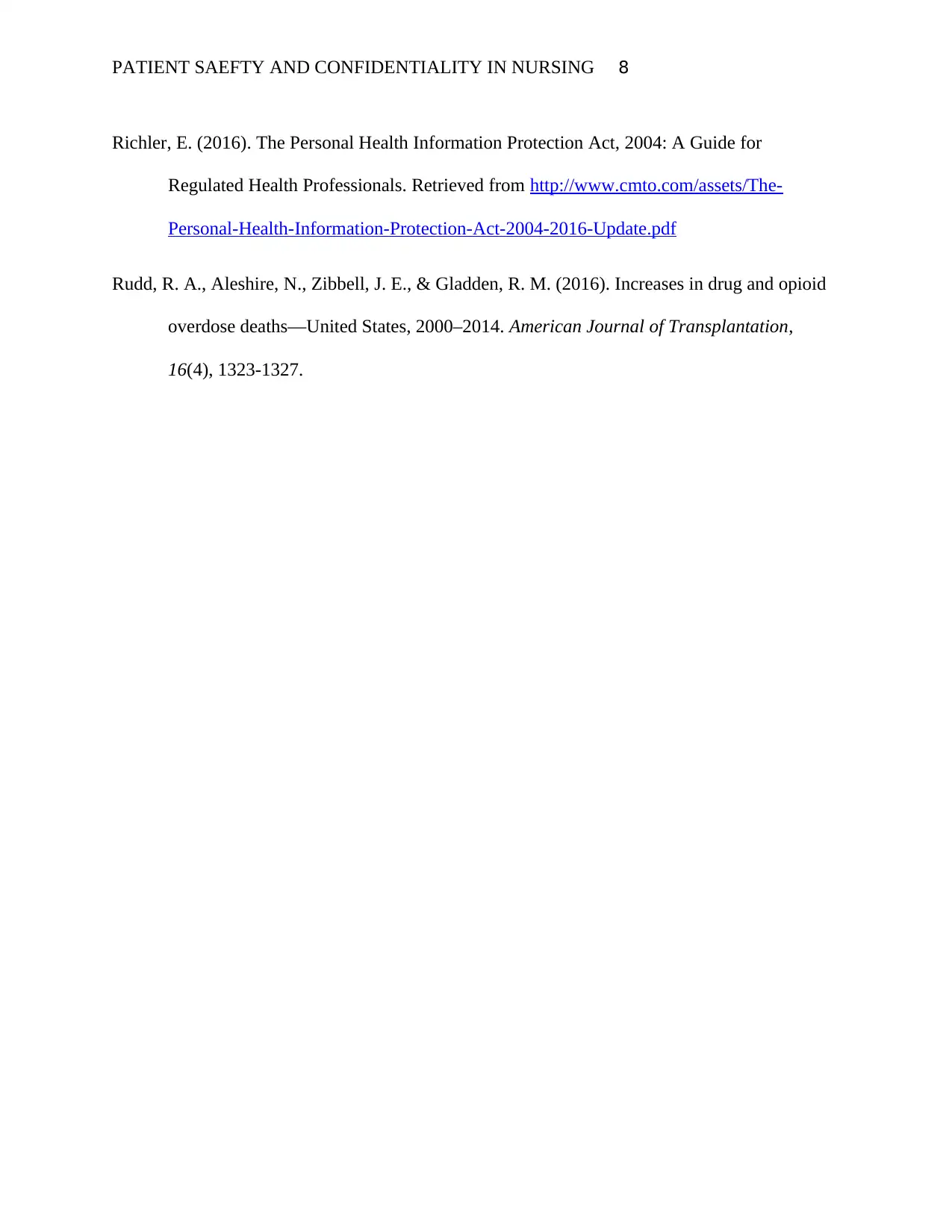Patient Safety and Confidentiality in Nursing: A Comprehensive Report
VerifiedAdded on 2023/06/10
|8
|1733
|71
Report
AI Summary
This report provides a comprehensive overview of patient safety and confidentiality within the nursing profession. It begins by defining patient safety, emphasizing the importance of minimizing risks and ensuring a safe healthcare environment. The report explores safety concerns related to medication administration, highlighting the significance of the 'rights' of medication administration and potential errors in the medication process. It also addresses safety concerns arising from mental illnesses, emphasizing the need for nurses to be aware of potential risks posed by these patients. Furthermore, the report discusses the global recognition of patient safety issues and the efforts being made worldwide to address them, including the growing problem of healthcare-associated infections. The report then shifts to the concept of confidentiality in nursing, defining it as the patient's right to have their information protected. It explores the legal and ethical implications of maintaining confidentiality, including dilemmas nurses face when balancing confidentiality with other ethical principles, such as the need to prevent harm. The report provides examples of such dilemmas and discusses the legal obligations nurses have to maintain patient confidentiality, referencing relevant legislation like the Personal Health Information Protection Act. The report also covers the consequences of breaching confidentiality, both legally and ethically, emphasizing the importance of maintaining trust between patients and nurses. It concludes by highlighting the significance of confidentiality in providing the highest standard of patient care.
1 out of 8
